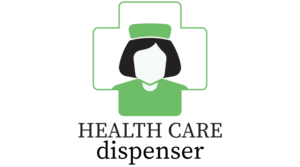Medical coding translates health services into universally recognized CPT codes. Using the proper CPT codes on medical bills and claims is crucial for efficient processing and reimbursement. The experts at Find-A-Code.com tell us that mastering medical coding requires learning what these CPT codes mean and how to apply them accurately.
CPT stands for Current Procedural Terminology. The American Medical Association maintains this set of over 8,000 codes representing medical, surgical, diagnostic and therapeutic procedures. Each CPT code has five numbers and sometimes additional letters or modifiers.
Examples include:
- 97110 – Therapeutic exercise to develop strength.
- 36415 – Routine blood collection.
- 43202 – Upper digestive tract endoscopy.
CPT codes tell insurance companies what services happened during a healthcare visit or event. Proper application of CPT codes drives correct provider reimbursement.
Key Coding Concepts
Using the right CPT codes starts with understanding some universal coding best practices including:
- Code assignment – Match provided services to the most accurate descriptive codes.
- Medical necessity – Only code and bill procedures that were medically needed.
- Specificity – Select the code with the highest applicable detail level.
- Bundling guidelines – Certain combinations of codes must or cannot be billed together according to the rules.
Following core coding conventions allows medical billers to build the foundations for compliance, efficiency, and revenue. Then nuances for specific contexts further refine abilities.
Settings and Specialties
Medical coding differs across settings and provider specialties. Key factors include:
- Clinical context – The specifics of each case impact applicable codes.
- Typical workflows – Standard protocols by specialty influence commonly used codes.
- System differences – Hospital vs. clinic vs. private practice coding varies.
- Regional norms – Local practice patterns affect code distributions.
While fundamentals remain consistent, an ambulatory clinic uses different codes than the emergency ward or a psychologist’s office. Best practices involve tailoring guidelines and audits to appropriate peer groups.
Building Accuracy Through Experience
Accuracy comes with time and exposure. Some key methods to refine abilities include:
- Practicing with diverse clinical cases – Code across specialties and settings.
- Referencing code books frequently – Double-check selections as needed.
- Collaborating with providers – Ask questions to improve documentation.
- Monitoring for evolving guidelines – Subscribe to code updates.
- Seeking expert feedback after mistakes – Learn the reasoning behind corrections.
Just like with any complex skill, overcoming early knowledge gaps and forming good habits early leads to excellence. Patience plus an attentive attitude drives success.
Ongoing Learning Process
Each year, the Centers for Medicare and Medicaid Services and AMA release new codes, revise old ones, or update rules. Significant revisions happened with ICD-10 in 2015 and Evaluation and Management changes in 2021. So medical coding requires an ongoing commitment to continuing education.
Staying current involves tracking newsletters, industry blogs, and expert analysis around changes. Then studying impacts in detail before integrating updates into workflows to maintain high accuracy and revenue. Savvy coders also provide feedback during annual public comment periods to shape future modifications.
Mastering Keys to Complex Cases
Certain scenarios like complications, comorbidities, or unique sequences, warrant special attention for flawless coding:
- Complications – Additional codes capture impacts beyond standard expectations.
- Comorbidities – Coding all co-existing conditions covered by the visit fully conveys complexity.
- Borderline condition choices – Pick conservatively then let auditors validate.
- Post-op timeframes – Certain recovery periods dictate appropriate code sets.
- Sequencing nuances – Order can matter for linked services like tests and therapies.
Conclusion
Understanding essential use cases, exceptions, and evolving guidelines, clinical coders reliably transform even the most complex care into properly documented CPT codes for optimal reimbursement. Blending medical knowledge, attention to detail, and analytical skills separates the coding masters.
